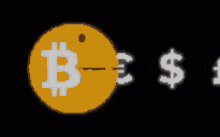Crypto Currency Backed by AI

There are several cryptocurrencies that are backed by or integrated with artificial intelligence (AI) technologies. Here are a few notable examples:
• SingularityNET (AGIX): This platform allows for the creation, sharing, and monetization of AI services on a decentralized marketplace. Users can access AI services using AGIX tokens. This project aims to democratize AI by providing an open-source platform where AI developers can share their services.
• Fetch.ai (FET): Fetch.ai leverages AI and machine learning to automate business processes, particularly in data processing and trading. The FET token is used within the network for transactions and to incentivize network participation.
• The Graph (GRT): While not directly an AI cryptocurrency, it uses AI to enhance its functionality by indexing blockchain data. This makes it easier for developers to access data for building decentralized applications, which can include AI applications. The Graph’s indexing protocol can be seen as an AI-powered search engine for blockchain data.
• Ocean Protocol (OCEAN): This platform enables secure data sharing and monetization, which is crucial for AI development that requires large datasets. OCEAN tokens facilitate transactions within this ecosystem, making it particularly useful for AI applications needing access to diverse data sets.
• Bittensor (TAO): Posts on X have highlighted Bittensor as a decentralized AI network where the TAO token plays a central role. This network aims to foster a community-driven approach to AI development, emphasizing decentralization and open-source AI technologies.
These projects illustrate how AI and blockchain can intersect, with AI enhancing the capabilities of blockchain networks or vice versa. Each of these cryptocurrencies serves a unique purpose within the broader ecosystem of AI and blockchain technology, focusing on different aspects like data management, AI service marketplaces, or fully decentralized AI computation.
Why can’t ai generate blockchain?
The challenge in having AI generate a blockchain primarily stems from several key aspects of both AI’s capabilities and the fundamental nature of blockchain technology:
• Understanding of Complex Systems: Blockchain is a complex system involving cryptography, distributed ledger technology, consensus mechanisms, and network protocols. While AI can understand and simulate some aspects of these systems, creating a fully operational blockchain requires deep domain knowledge across multiple disciplines that AI might not comprehensively grasp without specific programming or guidance.
• Security and Trustlessness: One of the core principles of blockchain is trustlessness, where no single entity has control over the system. AI systems, particularly those that might generate or manage blockchain, would need to be designed in a way that they do not become a single point of failure or trust. This involves secure coding practices, which AI might not execute with the necessary precision or understanding.
• Randomness and Entropy: Blockchain uses cryptographic techniques that require high-quality randomness for key generation, signatures, etc. AI models, especially those based on deterministic algorithms like neural networks, do not naturally produce true randomness. They might simulate it, but this could compromise the security of the blockchain.
• Consensus Mechanisms: Blockchain operates on consensus mechanisms like Proof of Work (PoW), Proof of Stake (PoS), or others. These mechanisms are not just about computing power or holding stakes but involve economic, game-theoretical, and social constructs which AI might not fully simulate or understand in all contexts.
• Legal and Regulatory Compliance: Blockchain implementations need to consider legal and regulatory frameworks which vary by jurisdiction. AI would struggle with these nuances unless explicitly programmed with current laws, which change over time.
• Innovation and Novelty: Blockchain technology is still evolving, with new protocols, improvements, and applications being developed. AI, while excellent at pattern recognition and optimization within known frameworks, might not innovate new blockchain protocols or identify novel uses without human insight into emerging trends or needs.
• Interoperability: Modern blockchain ecosystems often need to interact with other systems, including other blockchains, traditional databases, or even AI systems. Ensuring this interoperability while maintaining security and efficiency is complex and beyond straightforward AI generation.• Ethical and Philosophical Considerations: There’s also the matter of ethical deployment — deciding what kind of blockchain should be created, for whom, and for what purpose. These are decisions often requiring human judgment on ethics, privacy, and economic impact.
While AI can assist in parts of blockchain development, like optimizing smart contracts, analyzing blockchain data, or even predicting market trends, the holistic creation of a blockchain system, especially one that’s secure, innovative, and compliant, largely remains a human endeavor backed by extensive teamwork across various technical and non-technical fields. However, AI could be used to automate specific tasks within blockchain development or to simulate and test potential blockchain implementations under different scenarios.




